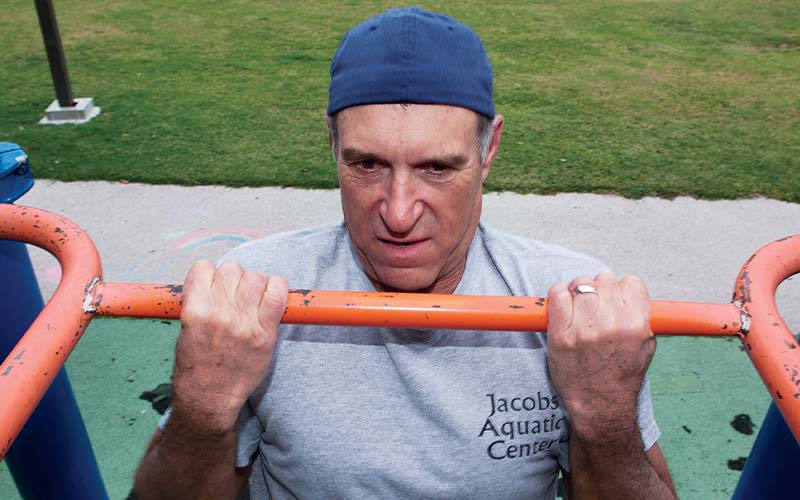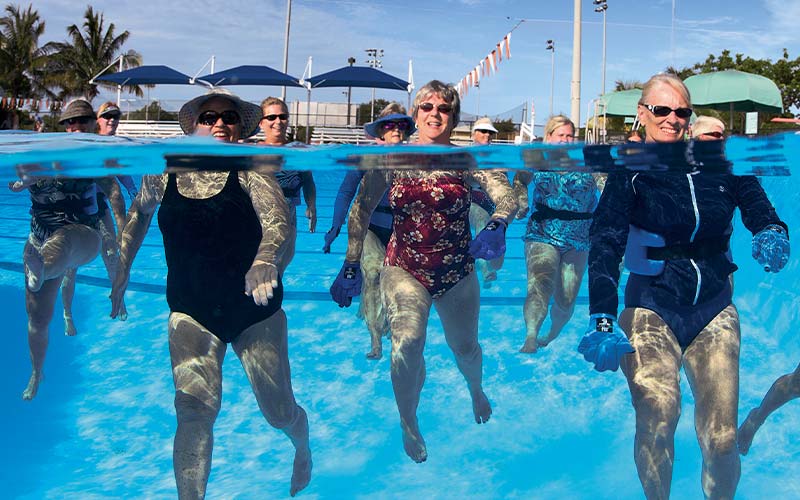Every morning, like most Americans, I commute to work. I drink my coffee and note the gazelle-like runners who are lucky enough or crazy enough to get out and jog the morning shift. Sometimes when commuting with friends (it’s good for the environment) I hear, “Why do people like that run?” Implicit in this comment are unspoken words like “skinny,” “muscular,” “lean,” “toned” and “ultra fit.”
Fitness is a transient phenomenon. Everyone can get more fit. Conversely, everyone — even that morning jogger — can experience fitness declines. All it takes to lose fitness is decreasing training overload; that is, failing to continually stress muscles to improve their performance. This is why the diet and supplement industry is a multibillion-dollar industry. The unfortunate reality is that there are no true quick fixes; fitness is a lifestyle.
Contrary to popular belief, there is no “best” diet or workout. Successful fitness programming is very personal. Everyone’s body is unique to some degree; fitness programs have to be tailored to suit your individual goals and lifestyle. If you simply move a little more and eat a little better each day, you are destined to become more fit. Conversely, if you do the opposite your waistline is certain to expand.
The only universal component everyone needs is a plan for success. All goals and self-expectations must be realistic and reasonably well suited to your personal daily grind. Here is a framework you can use to make a fitness plan customized to your own personal success.
Step 1: Identify a reasonable goal.
For some, a goal may be as straightforward as aiming to lose three inches from the midsection. Others have lifestyle-specific goals — to climb those five flights of stairs at work and still be able to maintain a conversation with the boss. Some just like to see what else our bodies are capable of attaining: “How many pull-ups can I do?”
Step 2: Determine your reason for selecting this goal.
Think about what will improve your overall health and happiness. Fitness is a lifestyle choice, so choose something that will improve your quality of life. It can help to identify an event you’d like to partake in, like walking briskly around the block without getting winded or looking and feeling great for your next dive vacation.

Step 3: Figure out why you are where you are.
Recognize the causes of previous fitness degradation. If you haven’t identified and confronted past reasons for fitness shortcomings, you won’t be able to move forward in your relationship with your body. Review the basics: Determine how you will handle fitting in fitness when you are stressed, working long hours or are confronted with frequent social engagements that involve dining out. When you can successfully identify your pitfalls, you can take precautions against cheating on your body.
Step 4: Identify method of overcoming each pitfall described above.
Learn from past mistakes; plan exercise dates with yourself at more motivating times of the day or before meetings that might run late and cause you to miss workouts. Pay attention to nutrition. Some individuals have reported success by drinking a glass of water just before a meal. Others have opted to meet their daily fruit and vegetable requirements prior to indulging. This helps you refocus on foods you can have rather than obsessing over foods that are “off limits.” One client found success incorporating stair-climbing into his routine twice a day. He started with just one flight each morning and afternoon because he could not fit an extra shower into his daily grind.

Step 5: Identify your exercise and nutritional changes.
Now it is time for your prescription. According to the American College of Sports Medicine, exercise is medicine. Your prescription must address both exercise and eating habits. It should start small and grow as you adopt a new, healthier lifestyle. Many exercises that can be integrated into your program are available in previous issues of Alert Diver or at AlertDiver.com. Adopting a fit lifestyle takes time. It is imperative you incorporate gradual changes to both your nutrition and exercise habits.
Nutritional:
- Eat a bag of raw celery each day before noon to help ward off hunger. (Substitute any raw vegetable.)
- Drink water just before each meal.
- Make sure at least half of each plate contains fruits and vegetables.
- Box up a portion of restaurant meals before eating.
- Leave a few bites on every plate.
Physical Activity:
- Climb the stairs each morning and afternoon.
- Go for a walk at lunch.
- Add push-ups or sit-ups at the beginning and/or end of each day.
- Sign up for a community “fun run/walk.”
- Become conscious of good posture; keep shoulders back and tummy in.

Step 6: Self-evaluation
Ask yourself, “How am I doing? Should I revisit my goals? Have I met or exceeded my expectations?” It is important to provide yourself with regular progress reports. For some people a journal is helpful, for others “there’s an app for that.” For some, a mental notation suffices. Whatever method works for you, be sure to reevaluate your progress early and often. This helps with accountability, as does a workout buddy. Holding yourself accountable takes work, and a little help from a friend can really make a difference.
Note: To avoid an increased risk of decompression sickness, DAN recommends that divers avoid strenuous exercise for 24 hours after making a dive. Always make sure that you have medical clearance to exercise during your annual physical exam or following any changes in your state of health.
© Alert Diver — Q1 Winter 2012